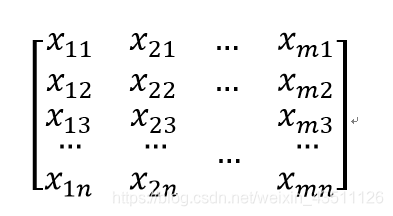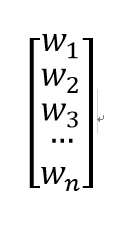1.第一课第二周作业
Logistic Regression with a Neural Network mindset
使用神经网络来实现逻辑回归
# -*- coding: utf-8 -*-
import numpy as np
import h5py
import scipy
from PIL import Image
from scipy import ndimage
from lr_utils import load_dataset
train_set_x_orig, train_set_y, test_set_x_orig, test_set_y, classes = load_dataset()
m_train = train_set_x_orig.shape[0] #训练集样本的个数
m_test = test_set_x_orig.shape[0] #测试集样本的个数
num_px = train_set_x_orig.shape[1] #每个样本的height = width
print ("Number of training examples: m_train = " + str(m_train))
print ("Number of testing examples: m_test = " + str(m_test))
print ("Height/Width of each image: num_px = " + str(num_px))
print ("Each image is of size: (" + str(num_px) + ", " + str(num_px) + ", 3)")
print ("train_set_x shape: " + str(train_set_x_orig.shape))
print ("train_set_y shape: " + str(train_set_y.shape))
print ("test_set_x shape: " + str(test_set_x_orig.shape))
print ("test_set_y shape: " + str(test_set_y.shape))
# Reshape the training and test examples
#将rgb图像转换为64*64*3的向量
train_set_x_flatten = train_set_x_orig.reshape(train_set_x_orig.shape[0], -1).T
test_set_x_flatten = test_set_x_orig.reshape(test_set_x_orig.shape[0], -1).T
print ("train_set_x_flatten shape: " + str(train_set_x_flatten.shape))
print ("train_set_y shape: " + str(train_set_y.shape))
print ("test_set_x_flatten shape: " + str(test_set_x_flatten.shape))
print ("test_set_y shape: " + str(test_set_y.shape))
print ("sanity check after reshaping: " + str(train_set_x_flatten[0:5,0]))
#将灰度值转换到0-1之间
train_set_x = train_set_x_flatten/255.
test_set_x = test_set_x_flatten/255.
#定义激活函数
def sigmoid(x):
s=1/(1+np.exp(-x))
return s
print ("sigmoid([9, 12]) = " + str(sigmoid(np.array([9,12]))))
#初始化参数
def initialize_with_zeros(dim):
w = np.zeros((dim, 1))
b = 0
assert (w.shape == (dim, 1))
assert (isinstance(b, float) or isinstance(b, int))
return w, b
#前向传播算法 一定要分析维数
def propagate(w, b, X, Y):
m = X.shape[1]
A = sigmoid(np.dot(w.T, X) + b) # compute activation
cost = -1. / m * np.sum(Y * np.log(A) + (1 - Y) * np.log(1 - A)) # compute cost
dw = 1./ m * np.dot(X, (A - Y).T)
db = 1./ m * np.sum(A - Y)
grads = {"dw": dw,
"db": db}
return grads, cost
w, b, X, Y = np.array([[1],[2]]), 2, np.array([[1,2],[3,4]]), np.array([[1,0]])
grads, cost = propagate(w, b, X, Y)
print ("dw = " + str(grads["dw"]))
print ("db = " + str(grads["db"]))
print ("cost = " + str(cost))
#Optimization
def optimize(w,b,X,Y,num_iterations,learning_rate,print_cost=False):
costs=[]
for i in range(num_iterations):
grads, cost = propagate(w, b, X, Y)
dw = grads["dw"]
db = grads["db"]
w=w - learning_rate*dw
b=b-learning_rate*db
if i %100 ==0:
costs.append(cost)
if print_cost and i % 100 == 0:
print ("Cost after iteration %i: %f" % (i, cost))
params = {"w": w,
"b": b}
grads = {"dw": dw,
"db": db}
return params,grads,cost
params, grads, costs = optimize(w, b, X, Y, num_iterations= 100, learning_rate = 0.009, print_cost = False)
print ("w = " + str(params["w"]))
print ("b = " + str(params["b"]))
print ("dw = " + str(grads["dw"]))
print ("db = " + str(grads["db"]))
print(costs)
#预测
def predict(w,b,X):
m = X.shape[1]
Y_prediction = np.zeros((1, m))
w = w.reshape(X.shape[0], 1)
A=sigmoid(np.dot(w.T,X)+b)
for i in range(A.shape[1]):
if A[0,i] <= 0.5:
Y_prediction[0,i]=0
else:
Y_prediction[0,i]=1
assert (Y_prediction.shape ==(1,m))
return Y_prediction
print ("predictions = " + str(predict(w, b, X)))
#使用神经网络模型
def model(X_train, Y_train, X_test, Y_test, num_iterations = 2000, learning_rate = 0.5, print_cost = False):
w, b = initialize_with_zeros(X_train.shape[0])
parameters, grads, costs = optimize(w, b, X_train, Y_train, num_iterations, learning_rate, print_cost)
w = parameters["w"]
b = parameters["b"]
Y_prediction_test = predict(w, b, X_test)
Y_prediction_train = predict(w, b, X_train)
print("train accuracy: {} %".format(100 - np.mean(np.abs(Y_prediction_train - Y_train)) * 100))
print("test accuracy: {} %".format(100. - np.mean(np.abs(Y_prediction_test - Y_test)) * 100))
d = {"costs": costs,
"Y_prediction_test": Y_prediction_test,
"Y_prediction_train": Y_prediction_train,
"w": w,
"b": b,
"learning_rate": learning_rate,
"num_iterations": num_iterations}
return d
d = model(train_set_x, train_set_y, test_set_x, test_set_y, num_iterations = 2000, learning_rate = 0.005, print_cost = True)
作业中,给定的训练集为rgb图像 为64x64x3的图像,共有209个,给定的测试集有50个,
1.将rgb图像转换为一个特征向量,该特征向量的维数为64x64x3=12288,即每个图像的特征数为12288个
2.定义激活函数,逻辑回归使用的是sigmoid函数
3.初始化参数w,将其初始化为0,且维数要与给定的特征数相同,即为12288个
4.前向传播,同时求出dw、db
5.不断的更新参数w,程序中,每100次输出一次loss
6.最后对数据进行预测,对于逻辑回归,小于0.5即为0(not)
关于维数:
1.给定的数据为(209,64,64,3)需要将其转换为(64*64*3,209)的矩阵,

其中n为12288,m为训练集的个数。
2.在初始化权重w是,维数为(12288,1)

与测试集做矩阵乘法

即得到每个样本的z,再带入激活函数sigmoid中,得到最终的输出值
3.在更新w是,求解dw,db,要保证其与w的维数相同,这就对np.dot的使用提出要求
需要注意的是:
1.一定要注意维数,在本题中 ,w,dw,x的维数是相同的,程序中使用assert保证其维数相同
2.在计算cost、dw、db时
cost = -1. / m * np.sum(Y * np.log(A) + (1 - Y) * np.log(1 - A))
dw = 1. / m * np.dot(X, (A - Y).T)
db = 1. / m * np.sum(A - Y)
一定要注意是1.而不是1,不然无法正确计算出loss等参数
3.另外,np.dot的使用也需要注意,例如下面的代码
import numpy as np
x=np.array([[1,2,3],[4,5,6],[7,8,9],[6,8,9]])
y=np.array([[1],[2],[3]])
z=np.array([1,2,3])
print(x.dot(y))
print(x.dot(z))
输出为:
[[14]
[32]
[50]
[49]]
[14 32 50 49]
x为4x3矩阵,y为3x1矩阵,z为1x3矩阵,则2次输出的结果均为其矩阵的算法,第一次为x*y,x的列数等于y的行数3,对于x.dot(z),x的列数3等于z的3,输出为一列
本人拙见,如有错误,还请海涵!








 本文详细介绍如何使用神经网络的思想实现逻辑回归,包括从数据预处理到模型搭建、参数优化及预测的全过程。通过具体代码实例,展示了如何将RGB图像转换为特征向量,定义激活函数,初始化参数,并进行前向传播、反向传播和梯度下降优化。
本文详细介绍如何使用神经网络的思想实现逻辑回归,包括从数据预处理到模型搭建、参数优化及预测的全过程。通过具体代码实例,展示了如何将RGB图像转换为特征向量,定义激活函数,初始化参数,并进行前向传播、反向传播和梯度下降优化。
















 9万+
9万+

 被折叠的 条评论
为什么被折叠?
被折叠的 条评论
为什么被折叠?








